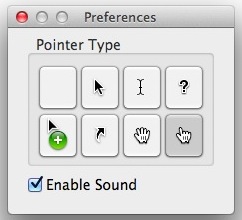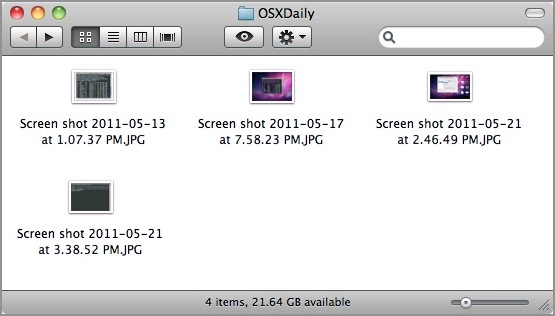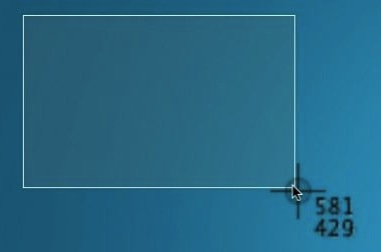Take Better Screen Shots in Mac OS X with 6 Pro Tricks & Tips
 Anyone who takes a lot of screenshots in Mac OS X knows the challenges associated with them; how quickly their desktop will fill up with various PNG files, sorting those into folders or just tossing them elsewhere, converting the screenshots to a different image format, copying them to the clipboard for pasting into another app, cropping down to size, or whatever else is required before the screen captures are in their final usable format.
Anyone who takes a lot of screenshots in Mac OS X knows the challenges associated with them; how quickly their desktop will fill up with various PNG files, sorting those into folders or just tossing them elsewhere, converting the screenshots to a different image format, copying them to the clipboard for pasting into another app, cropping down to size, or whatever else is required before the screen captures are in their final usable format.
Going beyond the standard advice and keyboard shortcuts, we’re going to focus on some more advanced methods for improving the screen capture experience in OS X, including setting a designated folder to save them all into automatically, changing the saved image format itself, taking challenging screen shots with the help of a timer, snapping the cursor, and a nice trick that lets you move around the drawn screen capture box after it’s been set on screen. These 5 tricks will help you to take better screen captures in Mac OS X, and they will apply to the standard methods of taking screenshots, with the exception of the timer which requires a separate feature outside of the normal keyboard shortcuts.
A quick review of the two primary screen shot shortcuts these tips will apply to, for those who are less familiar:
- Command+Shift+3 – Snaps a screen capture of the entire screen(s) and save it to the desktop as a file labeled “Screen Shot” followed by the date
- Command+Shift+4 – Turns the cursor into a selection box that can be drawn on screen to snapshot items in the rectangle, also saves to desktop as a file
There are actually many other keyboard shortcuts for taking screen shots in OS X but they are really best covered elsewhere since not every one of them will be applicable to the tips here.
1: Create & Set a Designated Screen Shot Folder
Tired of screen shots cluttering the desktop? Me too, and the solution is simple: make a designated folder for screenshots to appear into and then set that as the new default screen shot location. I recommend making a subfolder in the ~/Pictures/ directory named “Screenshots”, then use the following defaults command to set that as the new save location for all screenshots:
defaults write com.apple.screencapture location ~/Pictures/Screenshots/
Follow that up with a restart of SystemUIServer for changes to take effect:
killall SystemUIServer
Test it out by taking a screen shot, it’ll now save directly to the Screenshots folder instead of the desktop.
2: Change the Screen Shot Image File Format
PNG files are typically large and bloated and not the most web-friendly, if your screenshots are destined for the web you can dramatically reduce the file size and avoid the hassle of batch converting images by just changing the default screen shot file type to another image format:
defaults write com.apple.screencapture type jpg
And again, restart SystemUIServer for JPG to be set as the new file type:
killall SystemUIServer
Take a screenshot to confirm. You can also choose GIF, TIF, PDF, or return back to PNG if you want the default setting again. Pick the appropriate format for your needs and this can prevent you from having to batch convert a huge group of images after they’ve been taken.
3: Take Impossible Screen Shots with a Timer
Launch the Grab app found in /Applications/Utilities/ and you can take screen captures on a timer, letting you screenshot things that would otherwise be impossible, like some menu pulldowns, system events, and splash screens.
- From Grab, pull down the “Capture” menu and choose “Timed Screen”
The default Grab setting is 10 seconds, if you need to have a different time delay, use Terminal instead:
screencapture -T 3 osxdaily.jpg
Replace “3” with how ever many seconds you want the timed delay to be.
4: Capture the Mouse Pointer or a Custom Cursor in Screen Captures
The aforementioned Grab app has a handy feature that lets you show the pointer in screenshots, and it’s actually customizable from a variety of pointer types. Here’s how to use it:
- In the Grab app, open “Preferences” and select the desired cursor type”
- Take a screen shot using Grab app to capture the mouse cursor

5: Disable Drop Shadows from Appearing on Window Screen Shots
OS X defaults to including drop shadows behind window-centric screen shots (not full screen captures), but these can be disabled with a simple defaults write command applied in the Terminal, launch it and enter the following commands to turn the shadows off:
defaults write com.apple.screencapture disable-shadow -bool true
Hit Enter then kill the SystemUIServer for changes to take effect:
killall SystemUIServer
Exit out of Terminal and take a screen shot as usual, it will now be drop-shadow free and look a bit like this:

This can be reversed easily by applying the same command and flipping “true” to “false”, then killing SystemUIServer again to re-enable the wundowshadows.
6: Move the Selection Area from the Original Position
Command+Shift+4 allows you to take a screenshot with a selection box, but have you ever wanted to move it around after you’ve drawn that selection box? You can.
- Hit Command+Shift+4 to draw the screen shot selection box as usual, then hit and hold Spacebar and click to drag the box

I’d never actually heard of this one before, but CultOfMac found this neat trick, cheers to them!
Got any other pro tricks for taking better screen shots? Let us know in the comments.


I cant get the change to take effect. The commands seem to be accepted but nothing happens. Exactly where do I type these commands in terminal? Do I just open terminal and copy and paste them in or do I select something from the menu bar?
I have tried it both ways but nothings happening. Please help
Yes you type them into the terminal, then hit return.
There is very cool missing trick:
Command-Shift-4 then tap space-bar. It lets you take a screenshot of an entire window, even if it is partially behind another window.
Great tips!! How do I create a subfolder in /Pictures/?
the drop shadow commands do not work for me
[latest Mountain Lion, brand new skinny 27″ iMac]
Another great tip, if you would like to keep the screenshot on your clipboard for future pasting, press the Control key along with any of these screenshot commands.
Then, you can go to an open email, or Word, Pages, Photoshop file and paste it with the menu or keyboard command.
Thank you. Now maybe we will stop seeing less screen shots taken with the Grab application… When I see the word “Grab” next to the Apple in the menu bar on screen shots, I can’t help but think Amateur. :)
I use the Command+Shift+4 tap space bar then mouse click on the window to capture a whole window at a time. However I have found that the drop shadow make it look terrible, so I turn the dropshadow off for screen captures with:
defaults write com.apple.screencapture disable-shadow -bool true
then
killall SystemUIServer
to turn it back on youwould use:
defaults write com.apple.screencapture disable-shadow -bool false
Great one, completely forgot about it. We will add this to the list!
Or, you just Command+Shift+4 tap space bar + hold ALT and click, then you got the screenshot of the window without any shades.
Hi, thanks a lot for all these tips but I have a problem. When I want to have a screenshot, very often I have the ending .jpg but also sometimes it springs to the ending .pdf. I would like to know how to fix the ending to be always .jpg.
Thanks if you have any idea to do this.
Kind regards,
Frank
Command+Shift+4+space bar turns the crosshairs into a camera, then left mouse click and will take a screenshot of the active window. The space bar will toggle between crosshairs and camera until the lift mouse click.
Tips #s 1 & 2 can be easily done with TinkerTool, which can be downloaded (search for it online by name) for free.
Replace PNG with JPG for the web? Are you insane?
JPG is a lossy raster format. Every time you resize the image, quality goes down.
PNG is a lossless vector format. You can resize/scale without losing image quality.
You are a bit confused! PNG is a raster format, as it is with JPG. On the other hand, PNG is indeed lossless, but you can’t resize it at your will! Did you think of SVG ?
I agree with the reaction, but not with the reason. Screen Shots mainly contain text and lines. Using JPG on these result in “ringing” around high contrast parts because of its compression algorithm. JPG should only be used where there are smooth transitions (photos of natural environments). Use PNG or GIF instead for Screen Shots. The pictures will look better and be smaller.
Agreed – tip #5 is awesome!
I liked this one from your own site:
https://osxdaily.com/2011/05/23/disable-shadow-screen-shots-mac/
Great one, will update the list to include it!
Trick N:5 ROCKS! I didn’t knew it!
Cheers!
something wrong with that last one.
Command+Shift+4 followed by spacebar lets you get a snapshot of a window. But if you Command+Shift+4 to draw the screen shot selection box as usual you can’t then then hit Spacebar as it does the capture immediately.
Clarified it a bit, but you hit Command+Shift+4, then tap and HOLD the spacebar to be able to move the rectangular box. Otherwise, yes you are right, it captures immediately.
Wow, screenshots just got a lot better, thanks to that fifth tip!